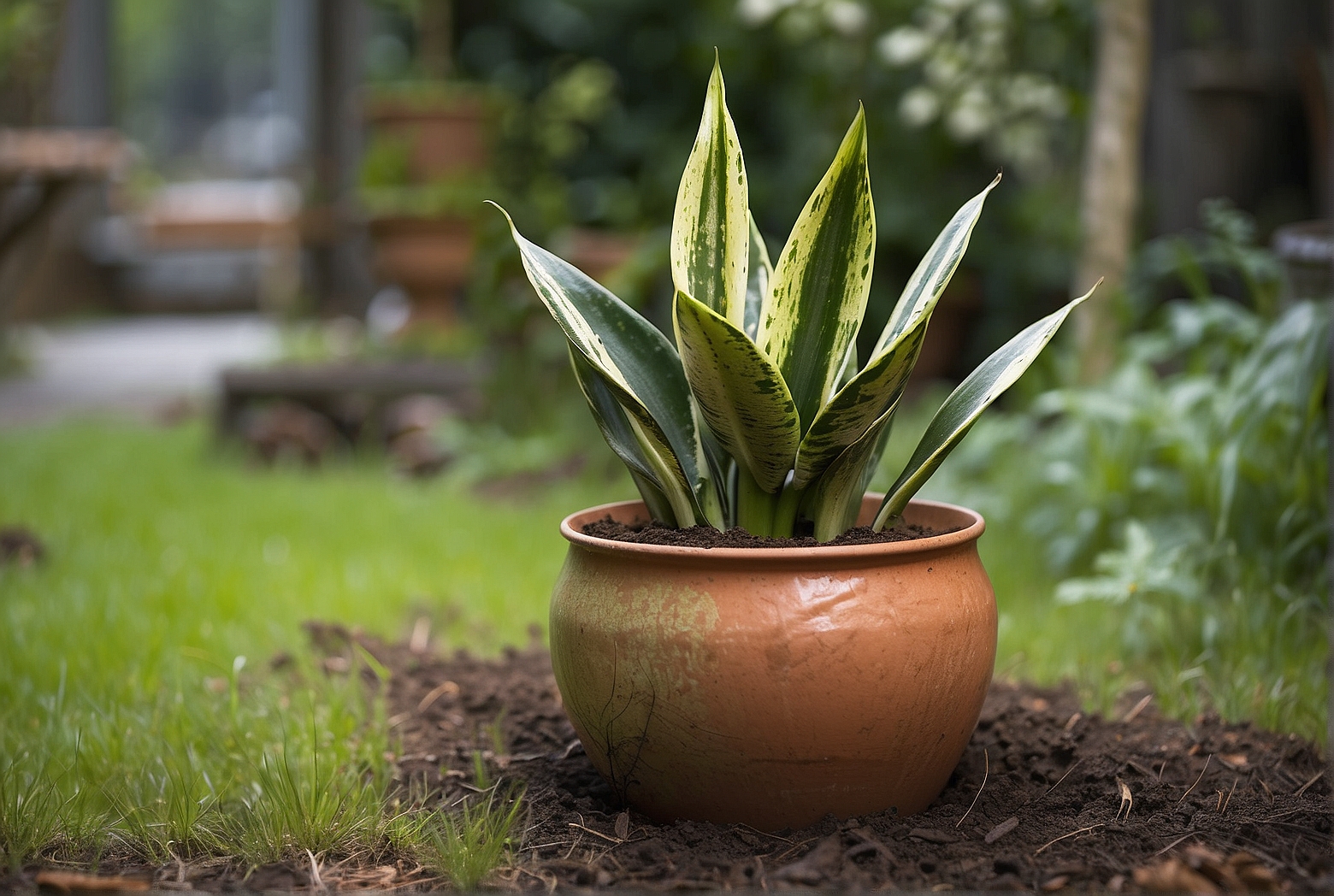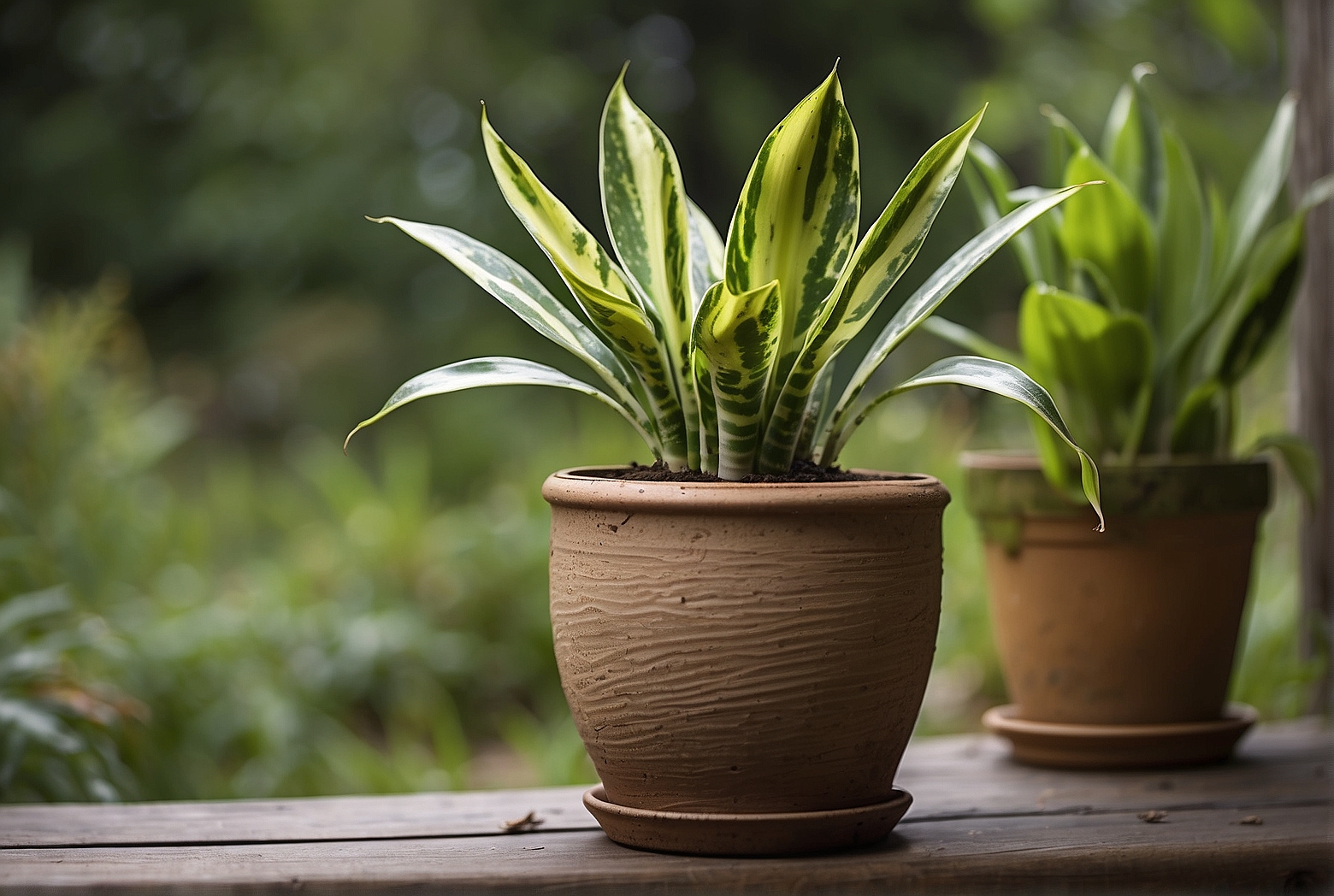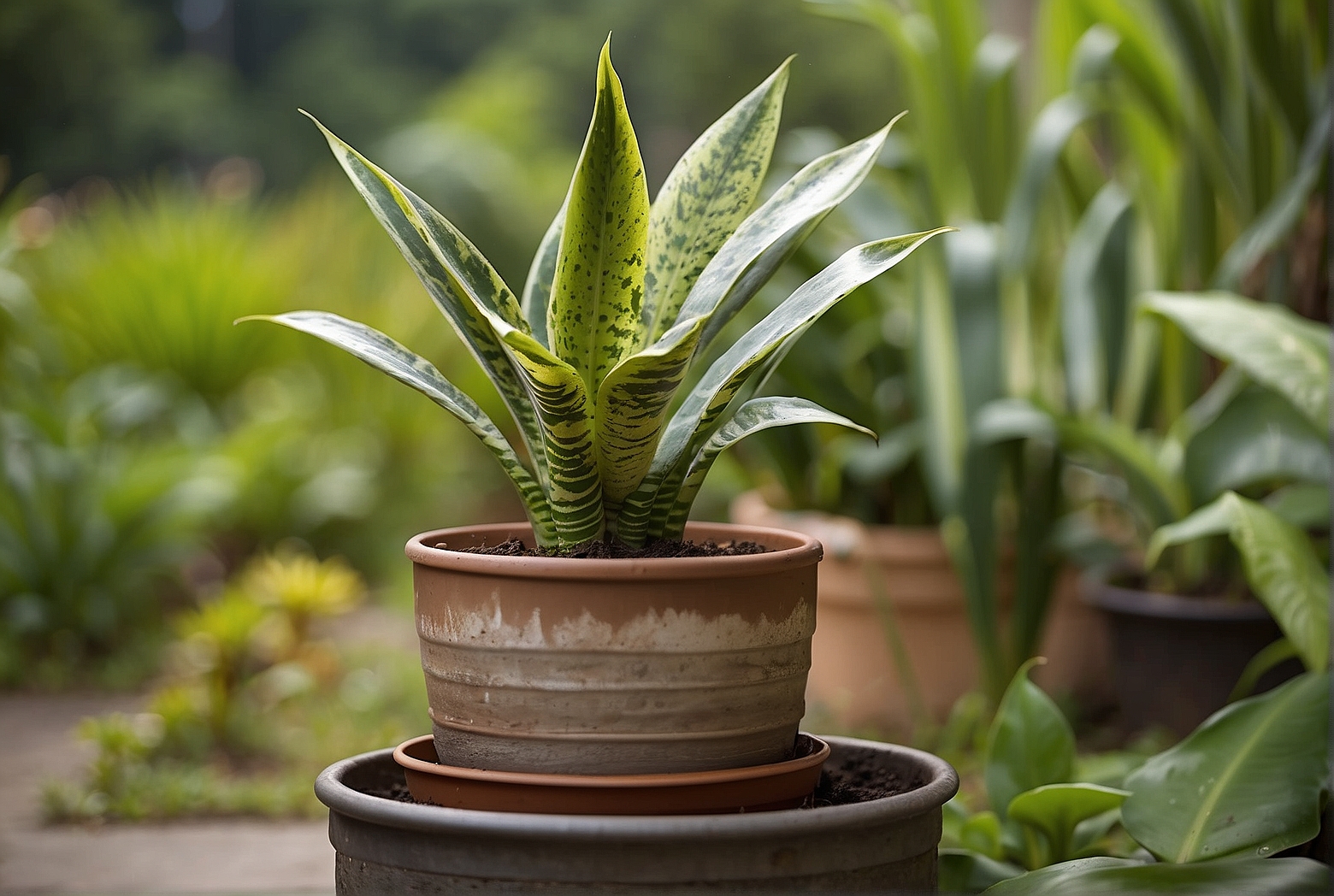Last Updated on April 13, 2024 by Tony Manhart
Did you know that snake plants can actually thrive outdoors? These hardy and resilient plants, known for their striking upright leaves and ability to withstand neglect, can also flourish in a garden or patio setting. While typically grown as indoor plants, snake plants are surprisingly adaptable and can handle a variety of outdoor conditions. Whether you want to add some greenery to your outdoor space or simply want to experiment with different planting options, snake plants might just be the perfect choice for you. Let’s explore the factors that contribute to their survival and how you can successfully cultivate them in an outdoor environment.
Introduction
Snake plants, also known as Sansevieria, are unique and versatile plants that have gained popularity as indoor houseplants. However, did you know that these resilient plants can also thrive outdoors? In this article, we will explore the natural habitat of snake plants, the benefits and challenges of growing them outdoors, as well as maintenance tips to ensure their well-being. Whether you’re a seasoned gardener or just starting your green thumb journey, this comprehensive guide will equip you with the knowledge you need to successfully cultivate snake plants in your outdoor spaces.
Natural Habitat of Snake Plants
Origins in Arid Regions of West Africa
Snake plants have their origins in the arid regions of West Africa, where they have adapted to survive in harsh conditions. These regions, including countries like Nigeria, Ghana, and Côte d’Ivoire, experience dry and arid climates with limited rainfall. The ability of snake plants to withstand these challenging environments has made them excellent candidates for outdoor cultivation in various regions around the world.
Native Environments and Climate Conditions
In their native environments, snake plants are often found in dry savannahs, deserts, and rocky areas. They are well-adapted to tolerate both extreme heat and drought, making them an ideal choice for outdoor cultivation in regions with similar climate conditions. Snake plants have also been observed to thrive in poor and sandy soils, further showcasing their adaptability to different environments.

Indoor vs Outdoor Cultivation
Benefits of Growing Snake Plants Indoors
Snake plants are cherished as indoor houseplants due to their air-purifying properties, low maintenance requirements, and ability to thrive in low light conditions. When grown indoors, they can add a touch of greenery to any room and provide numerous health benefits. Additionally, snake plants are suitable for people with allergies, as they can improve indoor air quality by filtering harmful toxins.
Factors to Consider when Moving them Outdoors
While snake plants can be successfully grown outdoors, there are a few factors to consider before making the transition. First, the climate in your region plays a crucial role in the success of outdoor cultivation. Snake plants thrive in mild climates, and extreme cold or hot temperatures can negatively impact their growth. Additionally, the level of sun exposure, soil conditions, and watering practices need to be carefully managed to ensure the health and well-being of the plants.
Climate Requirements
Understanding Temperature Preferences
Snake plants prefer relatively stable temperatures between 70°F to 90°F (21°C to 32°C). They can tolerate mild fluctuations but may struggle in regions with extremely high or low temperatures. It is essential to consider the climatic conditions of your area before deciding to grow snake plants outdoors, as providing optimal temperature ranges is crucial for their growth and survival.
Ideal Humidity Levels
Snake plants have adapted to low humidity environments and can thrive in areas with moderate to low humidity. However, they may struggle in areas with excessively high humidity, as it can lead to root rot and other fungal diseases. Keeping humidity levels moderate and providing good air circulation is essential for the overall health of the plants.

Sunlight Exposure Needs
Snake plants are known for their ability to tolerate low light conditions, making them excellent choices as indoor plants. However, when grown outdoors, they still require some level of sunlight exposure. Partial shade to full sun exposure is ideal for snake plants, but avoid exposing them to direct, intense sunlight for prolonged periods, especially in hot climates. Striking a balance between sun and shade will help maintain their vibrant green color and overall health.
Growing Snake Plants Outdoors
Choosing the Right Location in Your Garden
When selecting a location in your garden for snake plants, consider their temperature and sunlight exposure preferences. Look for an area that receives partial shade or filtered sunlight for most of the day. This helps protect the plants from intense heat and ensures they receive adequate light for photosynthesis. Avoid placing them in areas prone to strong winds or areas with standing water to prevent potential damage or waterlogging.
Preparing the Soil Conditions
Snake plants thrive best in well-draining soils with good moisture retention capacity. Prior to planting, prepare the soil by adding organic matter such as compost or well-rotted manure to improve its fertility and drainage. This will help ensure the roots have a healthy environment to establish and grow.
Planting Snake Plants in Outdoor Containers
If you prefer growing snake plants in containers, choose pots with drainage holes to prevent waterlogging. Use well-draining potting mixes formulated for succulents or mix regular potting soil with perlite or sand to enhance drainage. Plant the snake plants at the same depth as they were in their original containers, ensuring that the soil is firmly packed around the roots.
Proper Spacing and Arrangements
Allow sufficient space between snake plants when planting them outdoors to provide adequate airflow and prevent overcrowding. This will help minimize the risk of pests and diseases and allow each plant to thrive to its fullest potential. As a general guideline, space snake plants approximately 12 to 18 inches apart from each other.
Mulching and Watering Techniques
Apply a layer of organic mulch around the base of the snake plants to help retain soil moisture, regulate soil temperature, and suppress weed growth. Mulching also adds organic matter to the soil as it breaks down over time, promoting overall soil health. When it comes to watering snake plants outdoors, aim for moderate waterings, allowing the soil to dry out slightly between waterings. Overwatering can lead to root rot, so it’s essential to strike a balance and adjust watering frequency based on your specific climate and soil conditions.
Dealing with Potential Pests and Diseases
While snake plants are generally resistant to pests and diseases, they can still be susceptible to certain issues when grown outdoors. Common pests that snake plants may encounter include mealybugs, spider mites, and thrips. Regularly inspect the leaves for any signs of infestation, and if detected, treat the affected plants with appropriate organic or chemical pest control methods. Keep an eye out for signs of fungal diseases such as root rot, which can occur due to excessive moisture or poor drainage. Ensure proper watering practices and maintain good airflow around the plants to prevent fungal issues.
Suitable Outdoor Regions
Regions with Mild Climates
Snake plants thrive in regions with mild climates, where temperatures rarely drop below 50°F (10°C) or exceed 90°F (32°C). Examples of suitable regions for outdoor cultivation include parts of Southern United States, Mediterranean climates, and coastal areas with moderate temperature ranges.
Considerations for Colder Areas
In colder regions, snake plants are better suited as indoor houseplants or container plants that can be brought indoors during the winter months. They may tolerate mild frosts for short periods, but prolonged exposure to freezing temperatures can severely damage or kill the plants. If you’re located in a colder region and wish to grow snake plants outdoors, consider using protective coverings such as frost blankets during colder seasons to help safeguard the plants.
Too Hot or Tropical Climates
Snake plants can struggle in regions with extremely hot or tropical climates, as excessive heat and humidity can negatively impact their growth. If you live in an area with consistently high temperatures or high humidity levels, it is advisable to grow snake plants as indoor houseplants or provide them with shaded outdoor spaces to protect them from intense heat and sun exposure.
Benefits of Growing Snake Plants Outdoors
Improved Air Purification
Just like their indoor counterparts, snake plants grown outdoors continue to excel in air purification. They absorb various pollutants and release oxygen, improving the overall air quality in your garden. By reducing indoor and outdoor air pollution, snake plants contribute to a healthier and more pleasant environment for you and your family.
Enhanced Carbon Dioxide Absorption
Snake plants play a vital role in the carbon cycle by absorbing carbon dioxide during photosynthesis. By incorporating these plants into your outdoor spaces, you are contributing to the reduction of greenhouse gases and combating climate change on a small scale.
Positive Impact on Local Ecosystems
When snake plants are grown outdoors, they can provide habitats and refuge for beneficial insects and wildlife in your garden. These plants attract pollinators such as bees and butterflies, helping to support local ecosystem diversity and promote the health of your garden as a whole.
Challenges and Limitations
Risk of Frost Damage
One of the primary challenges of growing snake plants outdoors is the risk of frost damage. These plants are not frost-tolerant and can suffer serious harm when exposed to freezing temperatures. It is crucial to protect snake plants during colder seasons by bringing them indoors or using appropriate frost protection techniques.
Drought and Excessive Watering Concerns
While snake plants are known for their ability to tolerate drought conditions, they still require regular watering, especially during their active growing season. However, it is equally important to avoid overwatering, as snake plants can be sensitive to waterlogging and root rot. Finding the right balance of watering is key to maintaining their health and vitality.
Susceptibility to Certain Pests
Although snake plants are generally resistant to pests, they can still be susceptible to infestations by mealybugs, spider mites, and thrips when grown outdoors. Regularly inspecting the leaves and implementing appropriate pest control measures, such as insecticidal soaps or organic treatments, will help prevent and address any issues promptly.
Difficulty in Controlling Sunlight Exposure
When grown outdoors, it can be challenging to regulate the amount of sunlight exposure snake plants receive. Excessive sun exposure, especially during hot summer months, can lead to sunburn and leaf damage. Ensuring proper shading and providing partial shade can help protect the plants from intense sunlight and maintain their vibrant appearance.
Maintenance and Care
Regular Watering Schedules
Establishing a consistent watering schedule is essential for maintaining the health of snake plants outdoors. Water the plants thoroughly, allowing the soil to dry out slightly between waterings. During the winter months or in regions with lower rainfall, reduce the frequency of watering while still ensuring the plants receive adequate moisture.
Fertilization Practices
Snake plants require minimal fertilization to thrive. Apply a balanced, slow-release fertilizer once or twice a year during the active growing season to provide the necessary nutrients. It is crucial not to over-fertilize, as this can lead to salt accumulation and damage the plants. Always follow the manufacturer’s instructions and use fertilizers specifically formulated for houseplants.
Pruning and Dividing Techniques
Pruning snake plants outdoors is generally minimal, as they naturally maintain an upright and compact form. However, if desired, you can remove any yellowing or damaged leaves to maintain the plant’s overall appearance. Dividing snake plants every few years is also beneficial, allowing you to propagate new plants and prevent overcrowding.
Conclusion
Snake plants are remarkable plants that not only thrive indoors but also have the potential to flourish in your outdoor spaces. By understanding their natural habitat, climate requirements, and taking the necessary precautions, you can successfully grow snake plants outdoors. The benefits of improved air purification, enhanced carbon dioxide absorption, and the positive impact on local ecosystems make snake plants a valuable addition to any garden. Remember to provide appropriate care, monitor for potential challenges, and enjoy the beauty and resilience of these remarkable plants in your outdoor oasis.
Tony Manhart is a passionate gardener who has been tending to gardens for over 20 years. He takes pride in creating beautiful outdoor spaces with plants, trees, and shrubs that can thrive in any environment. He loves to share his knowledge with others and has taught classes on gardening basics and advanced techniques. He is committed to sustainability, using natural and organic methods to create and maintain gardens. He also works with local organizations to create green spaces for communities. When he’s not gardening, Tony enjoys hiking, reading, and spending time with his family.

